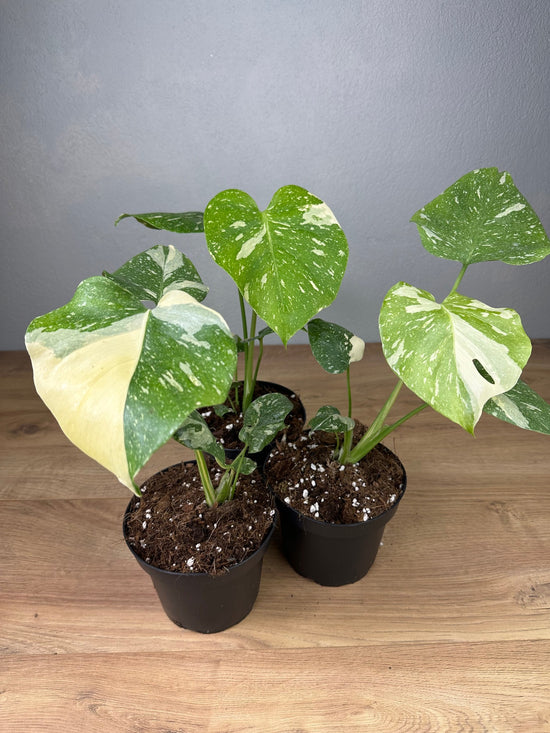More care tips for your Monstera
Repot Monstera regularly
Repotting is also part of good Monstera care. Over time, the plant will completely fill its pot. You should repot when the roots emerge from the bottom of the pot, but at least every two to three years. This gives the Monstera more space, fresh substrate, and a better supply of nutrients. Spring is ideal, when the growth phase begins. Choose a new pot that's only slightly larger than the previous one, and make sure it has well-draining soil and a drainage hole to avoid waterlogging.
Let your Monstera climb
Whether Monstera deliciosa, Monstera adansonii, or Monstera obliqua – they all belong to the climbing plant family. In their natural habitat, they grow on tree trunks, constantly seeking light. They exhibit this typical behavior in living spaces as well: They strive upwards, form aerial roots, and thrive best with a stable support. It's best to place a moss stake or a climbing trellis directly in the pot, which your Monstera can cling to and grow upwards.
Imitate tropical humidity
The Monstera is native to tropical regions and appreciates high humidity. Especially in dry, heated environments, it's worth keeping the environment moist by regularly misting, using a humidifier, or placing a bowl of water near the plant. This will keep your plant healthy and resilient.
Don't forget to fertilize
For strong growth, your Monstera needs Regular nutrients. During the growing season from spring to fall, you can apply a green plant fertilizer every two to four weeks. This will support the development of strong leaves and stable growth. In winter, it is sufficient to fertilize less frequently or not at all.
Special species, special requirements
Variegated Monsteras, with their strikingly patterned leaves, require more light than their solid green variants. The white leaf areas lack chlorophyll and therefore cannot utilize light for photosynthesis. The plant produces less energy overall and relies on good light conditions. With too little light, the variegation can gradually disappear, and the new leaves become increasingly green. At the same time, direct sunlight should be avoided, as variegated leaves are more sensitive to light and can burn more quickly. Variegated Monsteras therefore need plenty of bright, indirect light. In addition, heavily variegated specimens with a high proportion of white require high humidity of over 70% to stay healthy and maintain their patterns.
Propagating Monstera
With proper care, the Monstera often grows quickly and forms long shoots—ideal for targeted pruning and propagation. Propagation via stem cuttings has proven particularly effective with the Monstera Deliciosa. With the right method, a new plant can be easily grown and cared for. Here you'll find our step-by-step guide for successfully propagating your Monstera.
FAQ on Monstera care
How do you care for a Monstera?
When caring for Monstera, a bright, indirectly lit location, regular watering, constant temperatures of around 21–25 °C and increased humidity are important.
How often do I need to water a Monstera?
Water the Monstera regularly, about every seven to ten days, depending on the season and location. Wait until the top two to three centimeters of soil are dry. It's better to keep the Monstera slightly drier than too wet, as waterlogging can lead to root rot.
What is the best location for a Monstera?
The ideal Monstera location is bright, but away from direct sunlight. A spot with indirect light protects the leaves from burning and promotes healthy growth, especially in more sensitive varieties like variegated Monsteras.
Why does my Monstera have yellow leaves and brown spots?
Yellow leaves and brown spots can indicate care mistakes with your Monstera, such as too much or too little water, an incorrect location, excessively dry air, or a nutrient deficiency. Regular checks help identify problems early and ensure your Monstera is optimally cared for.










